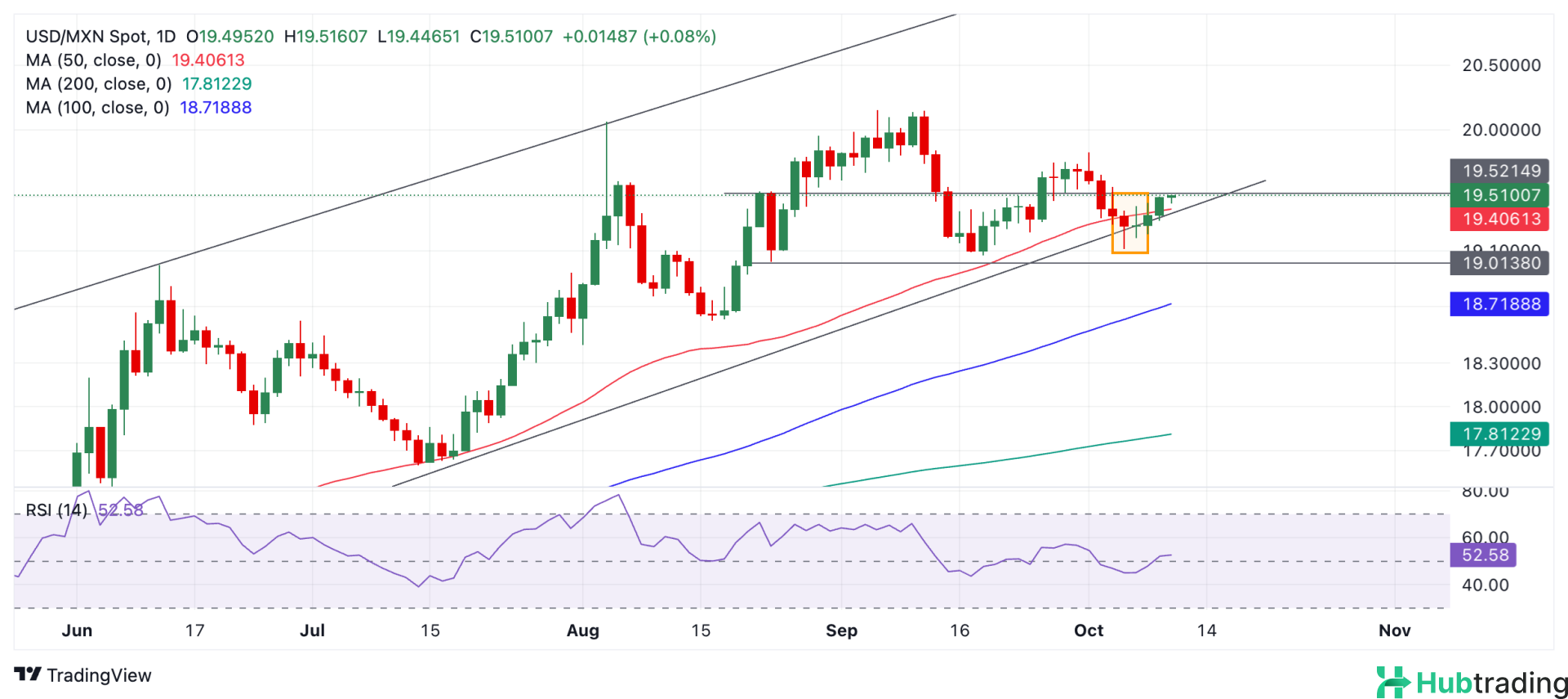- The Mexican Peso declines following the release of lower inflation data.
- This is likely to accelerate interest rate cuts by the Bank of Mexico, leading to reduced inflows.
- The U.S. Dollar rebounds, bolstering the medium-term uptrend of the USD/MXN pair.
The Mexican Peso (MXN) experiences a mix of slight gains and losses in its most actively traded pairs on Thursday, following a two-day decline. The Peso's downward trend began earlier in the week, influenced by a prevailing risk-off sentiment that typically affects emerging market currencies more severely.
Investor sentiment turned negative due to disappointment over the lack of stimulus measures announced by the China National Development and Reform Commission (NDRC) over the weekend. However, concerns eased somewhat when China’s Finance Ministry indicated plans to unveil a new fiscal package on October 12.
On Wednesday, the Peso continued to decline after lower-than-expected inflation data was released. The headline inflation rate for September fell to 4.58%, down from 4.99% in August, further pressured by a strengthening U.S. Dollar (USD).
This decrease in inflation raises the likelihood that the Bank of Mexico (Banxico) will implement more substantial interest rate cuts in the near future, potentially leading to reduced foreign capital inflows and diminishing demand for the Peso.
Potential Support for the Peso from New Wage Laws
The Peso may find some support from newly enacted wage laws, approved by the Senate on Wednesday, which guarantee that wages will rise in line with inflation. According to El Financiero, the reform allows for annual adjustments to minimum wages to ensure they do not fall below inflation, aimed at protecting purchasing power.
This alignment of wages with inflation could mitigate the disinflationary trend if consumer spending remains steady. Furthermore, if businesses pass on rising wage costs to consumers, this could sustain inflation levels. Continued elevated inflation might delay or moderate any interest rate cuts by Banxico, indirectly supporting the Peso.
Political Developments in Mexico’s Oil Sector
The Peso has also faced volatility due to rising political risks following the Morena-led government’s re-election in June. Recent news indicates that President Claudia Sheinbaum is seeking greater control over Mexico's state-backed oil industry, which may intensify these risks.
On Wednesday, Congress discussed reclassifying major oil producers Pemex and the Federal Electricity Commission (FEC) as “public enterprises,” compelling them to prioritize government objectives over profit. This reform was originally proposed by former President Andrés Manuel López Obrador (AMLO) and is likely to gain the ruling coalition's support in Congress.
Technical Analysis: USD/MXN Begins to Rise from Channel Base
The USD/MXN pair is showing signs of recovery after reaching the base of a medium-term rising channel.
USD/MXN Daily Chart

Technically, USD/MXN appears to be starting a new uptrend within its ascending channel. The overall medium and long-term trends remain bullish, supporting the notion that this trend may continue.
On October 4, the pair formed a bullish Japanese Hammer candlestick pattern at the channel's base, followed by a slightly bullish Doji candlestick and two subsequent green candles. This setup indicates a reversal from the short-term downtrend, now appearing technically bullish.
Currently, USD/MXN has reached resistance at 19.51 (the August 22 high). A break above 19.57 would signal a clearance of this resistance, likely leading to further upward movement toward the next target at approximately 19.83 (the October 1 high).





